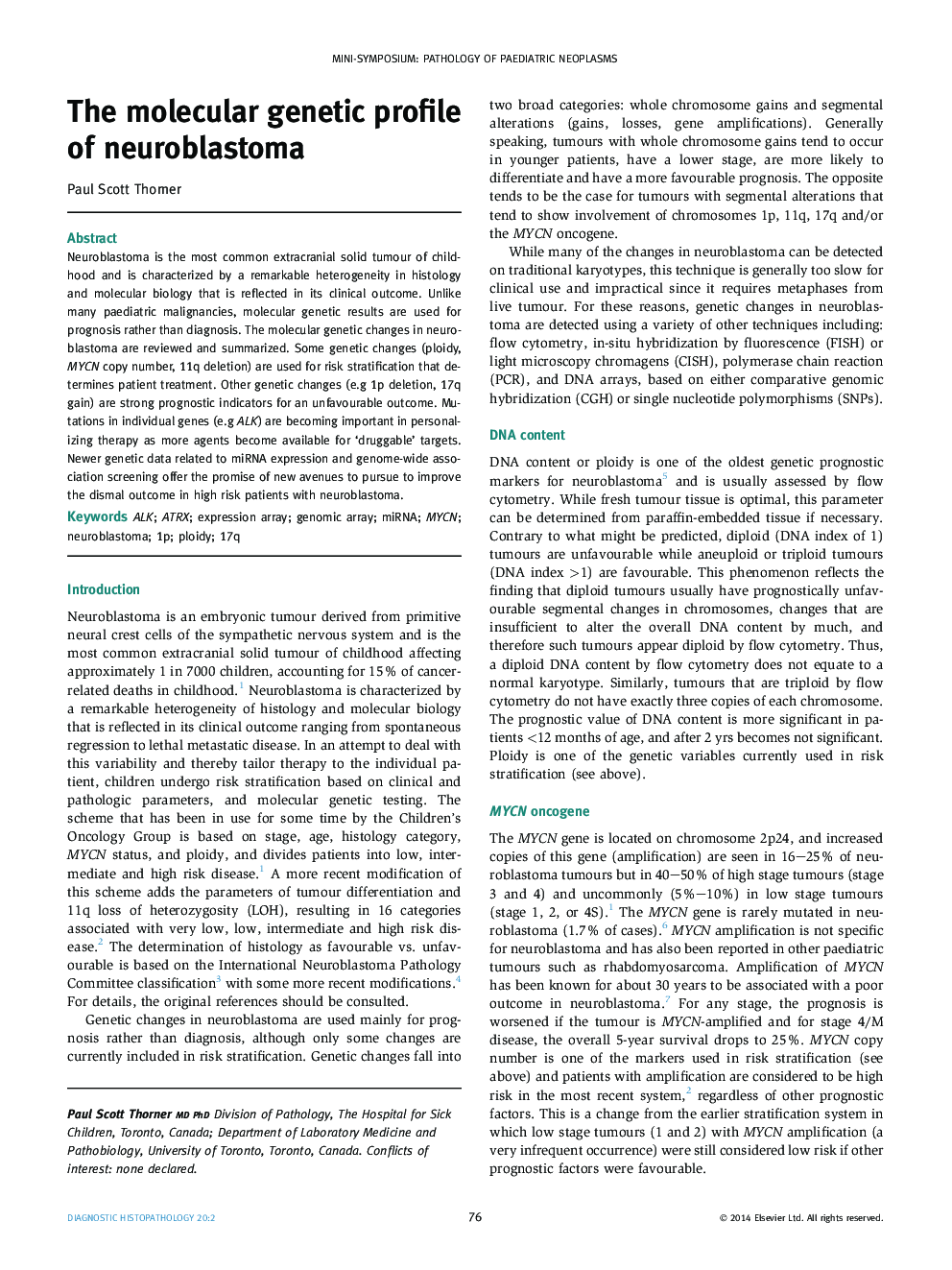| Article ID | Journal | Published Year | Pages | File Type |
|---|---|---|---|---|
| 4131212 | Diagnostic Histopathology | 2014 | 8 Pages |
Neuroblastoma is the most common extracranial solid tumour of childhood and is characterized by a remarkable heterogeneity in histology and molecular biology that is reflected in its clinical outcome. Unlike many paediatric malignancies, molecular genetic results are used for prognosis rather than diagnosis. The molecular genetic changes in neuroblastoma are reviewed and summarized. Some genetic changes (ploidy, MYCN copy number, 11q deletion) are used for risk stratification that determines patient treatment. Other genetic changes (e.g 1p deletion, 17q gain) are strong prognostic indicators for an unfavourable outcome. Mutations in individual genes (e.g ALK) are becoming important in personalizing therapy as more agents become available for ‘druggable’ targets. Newer genetic data related to miRNA expression and genome-wide association screening offer the promise of new avenues to pursue to improve the dismal outcome in high risk patients with neuroblastoma.
